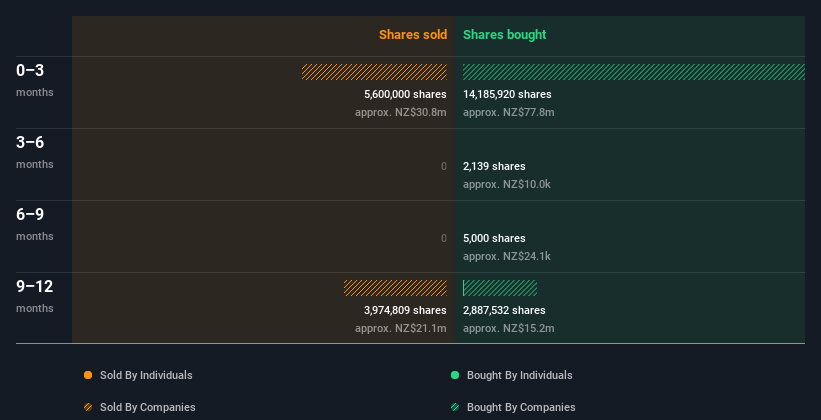Great news for Sanford Limited (NZSE:SAN): Insiders acquired stock in large numbers last year
When a single insider purchases stock, it is typically not a major deal. However, when multiple insiders purchase stock, like in Sanford Limited's (NZSE:SAN) instance, it's good news for shareholders.
Although we don't think shareholders should simply follow insider transactions, logic dictates you should pay some attention to whether insiders are buying or selling shares.
View our latest analysis for Sanford
The Last 12 Months Of Insider Transactions At Sanford
In the last twelve months, the biggest single purchase by an insider was when Independent Non-Executive Chairman Robert McLeod bought NZ$103k worth of shares at a price of NZ$5.15 per share. That means that an insider was happy to buy shares at above the current price of NZ$5.10. Their view may have changed since then, but at least it shows they felt optimistic at the time. In our view, the price an insider pays for shares is very important. As a general rule, we feel more positive about a stock if insiders have bought shares at above current prices, because that suggests they viewed the stock as good value, even at a higher price.
While Sanford insiders bought shares during the last year, they didn't sell. You can see a visual depiction of insider transactions (by companies and individuals) over the last 12 months, below. If you want to know exactly who sold, for how much, and when, simply click on the graph below!
Sanford is not the only stock insiders are buying. So take a peek at this free list of growing companies with insider buying.
Insider Ownership of Sanford
Many investors like to check how much of a company is owned by insiders. I reckon it's a good sign if insiders own a significant number of shares in the company. Insiders own 8.6% of Sanford shares, worth about NZ$41m. While this is a strong but not outstanding level of insider ownership, it's enough to indicate some alignment between management and smaller shareholders.
So What Do The Sanford Insider Transactions Indicate?
There haven't been any insider transactions in the last three months -- that doesn't mean much. But insiders have shown more of an appetite for the stock, over the last year. Overall we don't see anything to make us think Sanford insiders are doubting the company, and they do own shares. So while it's helpful to know what insiders are doing in terms of buying or selling, it's also helpful to know the risks that a particular company is facing. Case in point: We've spotted 2 warning signs for Sanford you should be aware of.
But note: Sanford may not be the best stock to buy. So take a peek at this free list of interesting companies with high ROE and low debt.
For the purposes of this article, insiders are those individuals who report their transactions to the relevant regulatory body. We currently account for open market transactions and private dispositions, but not derivative transactions.
This article by Simply Wall St is general in nature. We provide commentary based on historical data and analyst forecasts only using an unbiased methodology and our articles are not intended to be financial advice. It does not constitute a recommendation to buy or sell any stock, and does not take account of your objectives, or your financial situation. We aim to bring you long-term focused analysis driven by fundamental data. Note that our analysis may not factor in the latest price-sensitive company announcements or qualitative material. Simply Wall St has no position in any stocks mentioned.
Have feedback on this article? Concerned about the content? Get in touch with us directly. Alternatively, email editorial-team (at) simplywallst.com.

 Yahoo Finance
Yahoo Finance 
